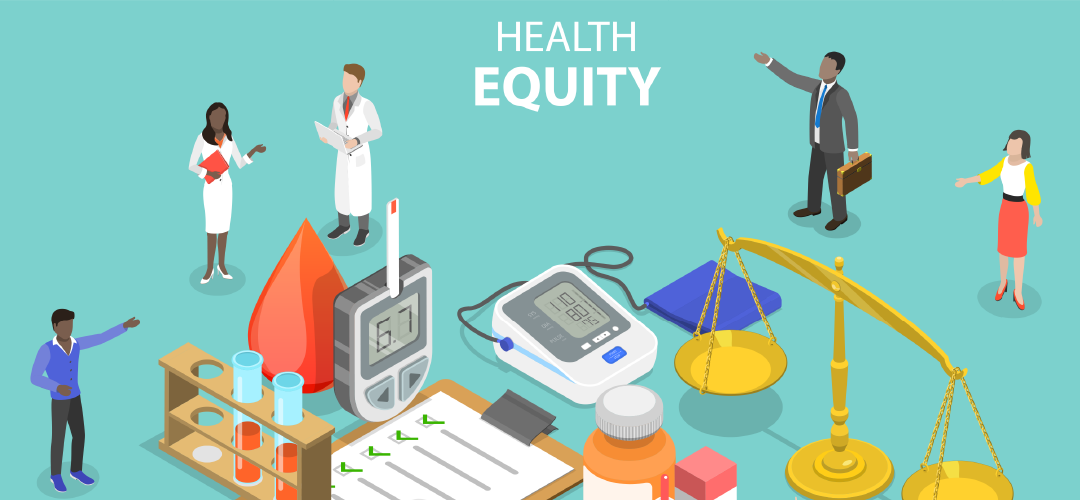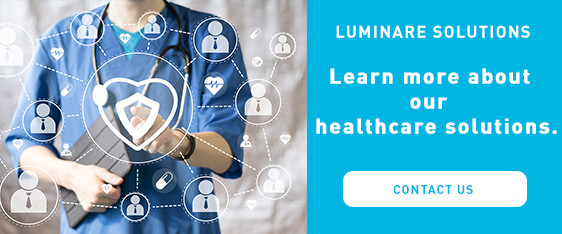
How to Bridge the Health Equity Gap with Interoperability, Governance, and Technology
By: Natalie Cheng
Uncovered. Brought to light. The pandemic has done just this to a variety of issues ranging from racial injustice to the health equity gap. Issues that have existed for centuries are being brought to the forefront and put under the national spotlight. One issue that sits deeply in our hearts at Luminare is the health equity gap. We saw firsthand how access to technology can give people an advantage over those that have limited to no access. When the COVID vaccines were approved, people that had technology were able to get on waitlists much faster than those that don’t have access to technology. The same can be said for data. It’s great that healthcare organizations have data to help patients, but what if providers can’t find this data. What if the information is buried in a sea of data? How long will it take a physician or other healthcare employee to find critical information to treat patients? To help sick patients, time is of the essence. Organizations can help bridge the health equity gap by implementing interoperability standards, pairing local public health and governance, and creating technological solutions.
Interoperability Standards
As data becomes more accessible to patients, healthcare organizations are tasked with ensuring that they have the right information to treat patients safely and efficiently and maintain a high quality of care. One way to ensure that data is accessible is agreeing on interoperability standards. For example, the American Nursing Informatics Association (ANIA) advocates “the use of terminology standards to support safe, efficient, and effective continual use of the data and information in health information technology systems, including point of care clinical decision support, outcomes measurement, the patient-centered longitudinal plan of care, cross-organizational research and other healthcare-related purposes.” To do this, the organization recommends that all healthcare organizations incorporate the ONC Interoperability Standards for nursing data in clinical systems. If other American Nurses’ Association (ANA)-recognized terminologies and classifications or local terms and codes are used in information systems, they must be mapped to Logical Observation Identifiers Names and Codes (LOINC) and Systematized Nomenclature of Medicine (SNOMED) Clinical Terms.
By providing EHR data that meets interoperability standards, healthcare organizations can easily share information across providers and improve patient care. Healthcare providers will get a comprehensive view of each individual patient, which helps them make better assessments of the patient and deliver better care. In addition, patients with chronic conditions or those who are transitioning from hospital to community care will require continuity of care. Interoperability will help with the transition by giving multiple health providers access to relevant patient information. Giving providers important patient information will also help inform accurate treatment. Having accurate information on patient race, ethnicity, and language will help healthcare systems tackle health inequities appropriately.
Pairing Local Public Health and Governance
Various local health departments are already finding ways to reduce health inequities. For example, according to the National Association of County and City Health Officials (NACCHO), the Clay County Public Health Center in Missouri established the Diversity Advisory Council on Health Equity to “provide a forum where the community could voice their needs on healthcare issues, but more specifically, on improving access to care.” The collaborations between diverse community members and the Council have resulted in viable solutions for reducing health inequities in the community that have been sent to the local public health system.
In our hometown of Houston, TX, Umair A. Shah, MD, MPH, a former Executive Director of Harris County Public Health stated that the organization “placed health equity as an organizational priority for not only its community work but also its internal policies.” The public health organization created a Healthy Living Matters program to reduce and prevent childhood obesity through community-centric efforts addressing issues such as access to healthy foods, environmental impediments, neighborhood and school walkability/physical activity, and civic engagement.
Technological Solutions
At Luminare, we shine light on healthcare data. We have current solutions that meet interoperability standards and are building new tools to help bridge this equity gap by uncovering the right healthcare data for organizations. To help get vaccines to underserved communities, we partnered with our friends in Corpus Christi who had already used our vaccine management solution, Innoculate, to distribute thousands of vaccines. The City of Corpus Christi along with the fire department implemented the Save Our Seniors program that is being rolled out across the state of Texas. The program brought vaccines directly to people in nursing homes and other areas that have little to no access to technology or people who are homebound.
To uncover healthcare data for organizations, our software, Leonardo, serves as the foundation to our portfolio of healthcare solutions. Leonardo is a smart data abstractor with AI-based medical correlation for simplifying accreditation and certification, driving advanced analytics, and supporting clinical decision making.
If you’re interested in learning more about our solutions, please feel free to reach out. Attending the HIMSS conference this year? Feel free to stop by our HIMSS kiosk and interoperability showcase booth: C200-11 and C200-131 for a chat.


